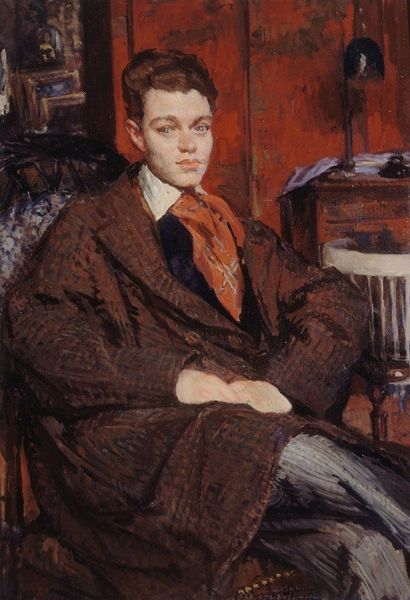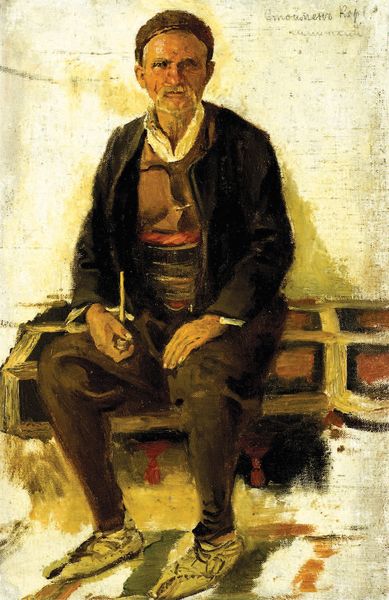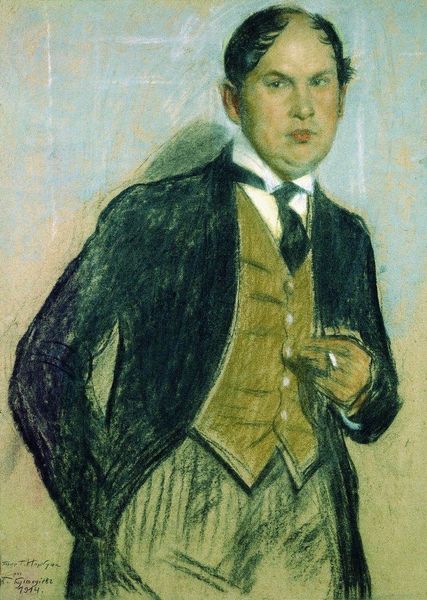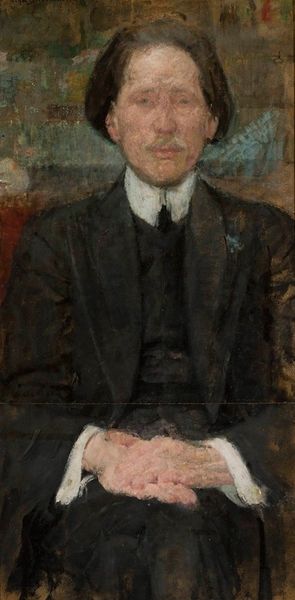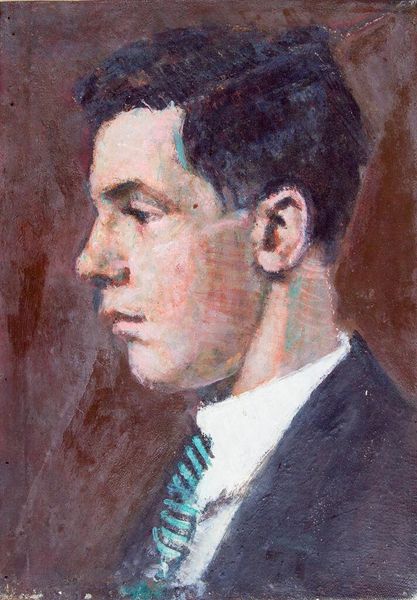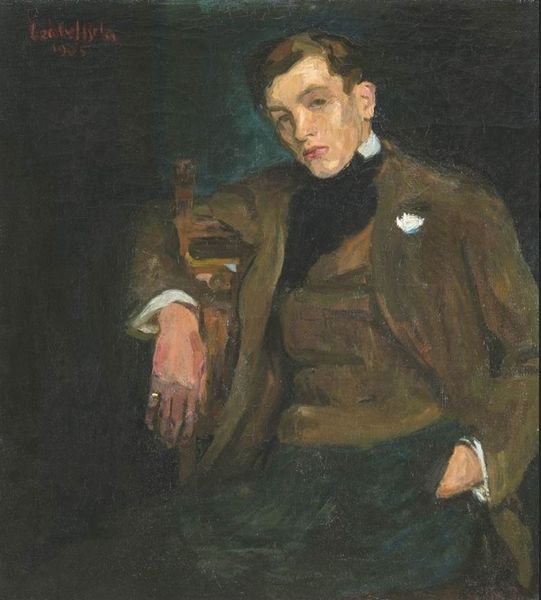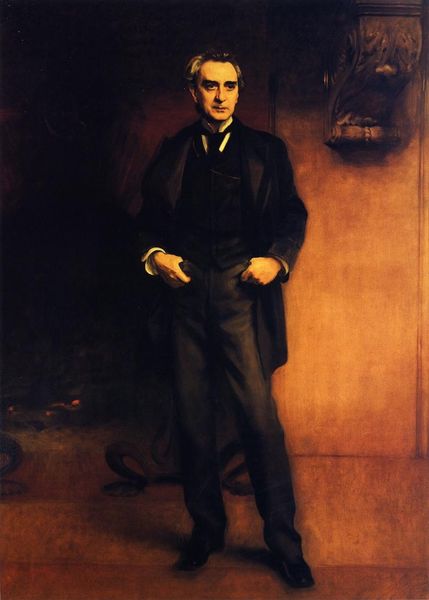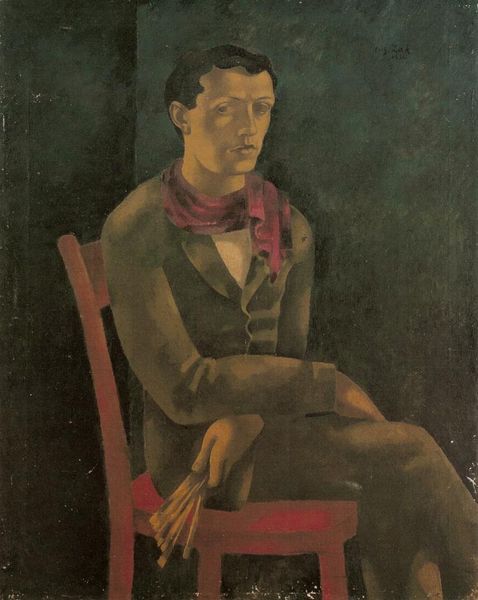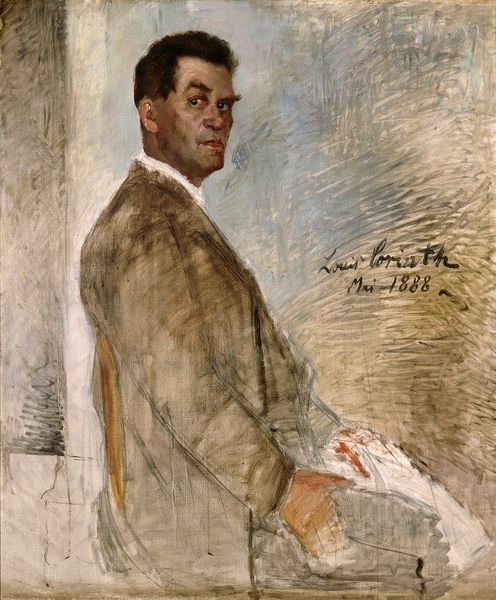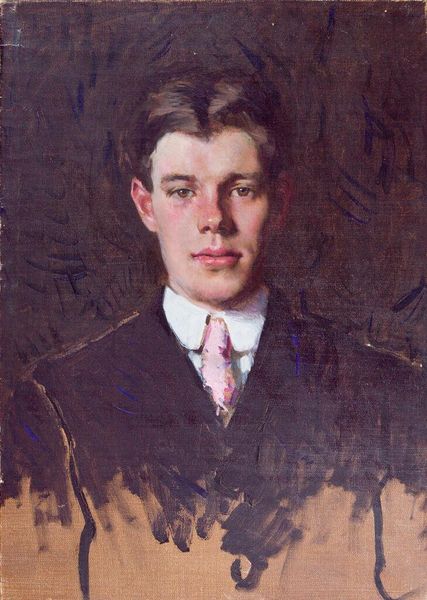
Portrait of Peter Kapitza 1926
0:00
0:00
boriskustodiev
Fitzwilliam Museum (University of Cambridge), Cambridge, UK
painting, oil-paint
#
portrait
#
painting
#
oil-paint
#
figuration
#
oil painting
#
famous-people
#
male-portraits
#
portrait art
#
realism
Dimensions: 107.9 x 90.5 cm
Copyright: Public domain
Curator: Boris Kustodiev painted this "Portrait of Peter Kapitza" in 1926. The oil on canvas now resides here at the Fitzwilliam Museum. Editor: The first thing that strikes me is the composition; Kapitza seems so deliberately placed, almost staged against that ornate couch. It hints at a specific identity that wants to be projected. Curator: Indeed, and considering the materials at hand, oil paints readily available then, but the upholstery! Look at that densely patterned fabric of the sofa; it screams bourgeois comfort and hints at Kustodiev's patrons being embedded within Russia’s complex social fabric in the 1920s. Editor: And isn’t that precisely the point? He is holding a pipe, leaning back so relaxedly in a suit and vest; it feels symbolic, of intellectual life and perhaps privilege. The vibrant pattern in the sofa offers such an evocative contrast to Kapitza's dark suit. What could those details mean? Curator: Kustodiev was fascinated by representing contemporary types but the making of such a representational portrait required time, and access. Kapitza must have moved within specific social and financial circles; he was not merely accessible. It underlines how even seemingly simple portraiture required logistical navigation. Editor: Perhaps the image of flowers hanging in the left of the painting reinforces ideals of beauty and delicate balance? Kapitza's steady gaze mirrors a different balance: one of poised control and quiet intelligence. It pulls this artwork into many directions, inviting layered and perhaps conflicting, interpretations. Curator: Yes, it speaks to the complex act of representing anyone accurately through oil and canvas—it underscores how access shapes artistic creation. We may be able to extract information, such as identifying him as an academic figure. The physical layers of the painting are rich material indeed, revealing the layers and class divides that might be less outwardly obvious to today's consumer of art. Editor: That’s a really astute insight; considering Kustodiev’s choice of such detail. These aren’t arbitrary choices: together, these features project carefully constructed signifiers of status. The image of success, as envisioned then, continues resonating with some aspects of contemporary taste, as well. It gives such enduring qualities to the whole portrait. Curator: Thank you; this journey together offers more appreciation of this portrait and also gives insight on the processes of its creator, Kustodiev. Editor: And allows new thoughts for ourselves as observers of a rich and thoughtful work, across years of different cultural interpretations.
Comments
No comments
Be the first to comment and join the conversation on the ultimate creative platform.



